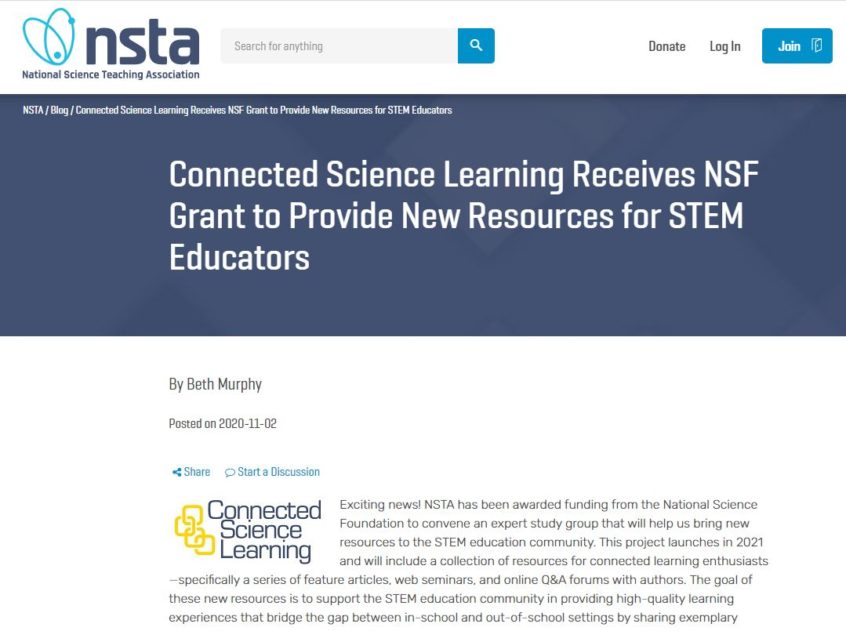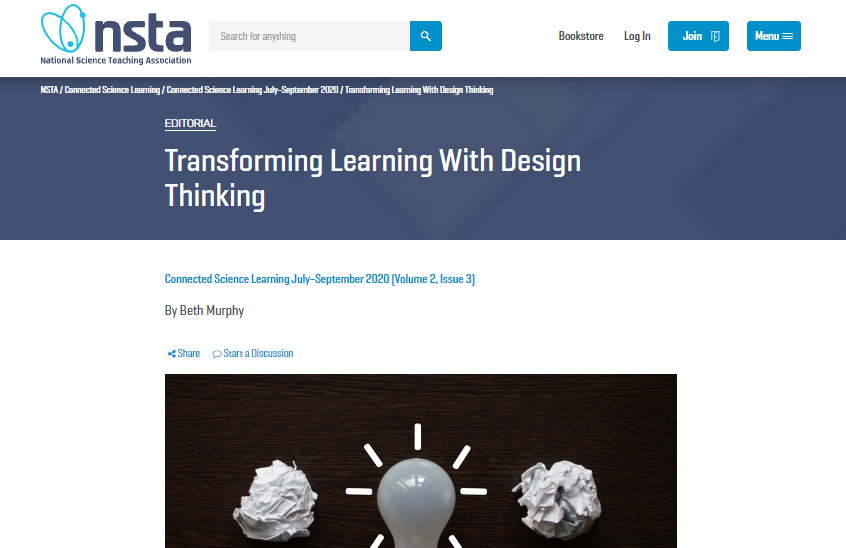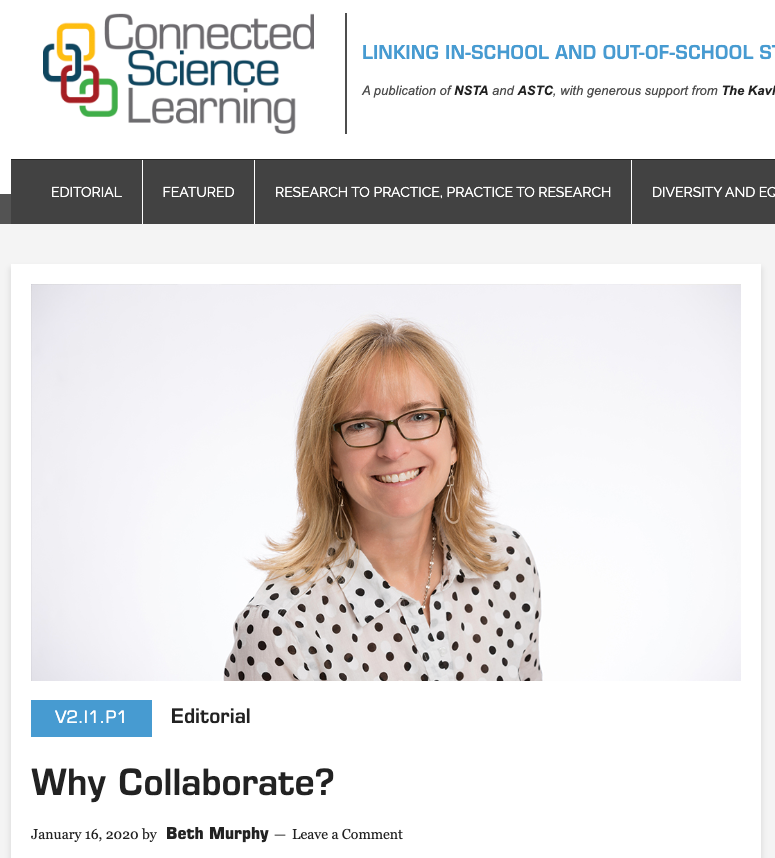“There’s been a lot of focus recently on STEM learning ecosystems and ecologies, recognizing that learning happens everywhere and all the time—in schools, in the community, and at home. Where and when learning can take place has no boundaries, and it is important to recognize the web of opportunity that exists within a community and find ways to strengthen it.”
Connected Science Learning Receives NSF Grant to Provide New Resources for STEM Educators
“Exciting news! NSTA has been awarded funding from the National Science Foundation to convene an expert study group that will help us bring new resources to the STEM education community. This project launches in 2021 and will include a collection of resources for
Short-Form Science
Close reading is the practice of investigating a short (range from one or two paragraphs to three pages) piece of high-quality text. The text should be complex enough to be worthy of multiple readings and sufficiently…
Transforming Learning With Design Thinking
Design thinking—an approach to innovation practiced by product designers, inventors, and entrepreneurs—is making its way into STEM (science, technology, engineering, and math) learning in and out of school. Many STEM educators are already well-versed in one version or another of the engineering design process. So, you might be wondering what design thinking has to offer that is new and different.
Helping STEM Education Thrive During COVID-19
“The timing is accidental. When we decided that this issue of CSL would focus on connected science learning experiences that incorporate social media and technology, we had no idea that the COVID-19 pandemic was brewing. While many STEM (science, technology, engineering, and math) education programs and schools already use social media, videoconferencing, and other online platforms to provide rich STEM learning
Why Collaborate?
“As a Connected Science Learning reader, you already know that collaboration is what this journal is all about. We strive to publish articles that highlight ways different organizations come together to connect in-school STEM (science, technology, engineering, and math) learning to the world outside the classroom.” READ MORE






